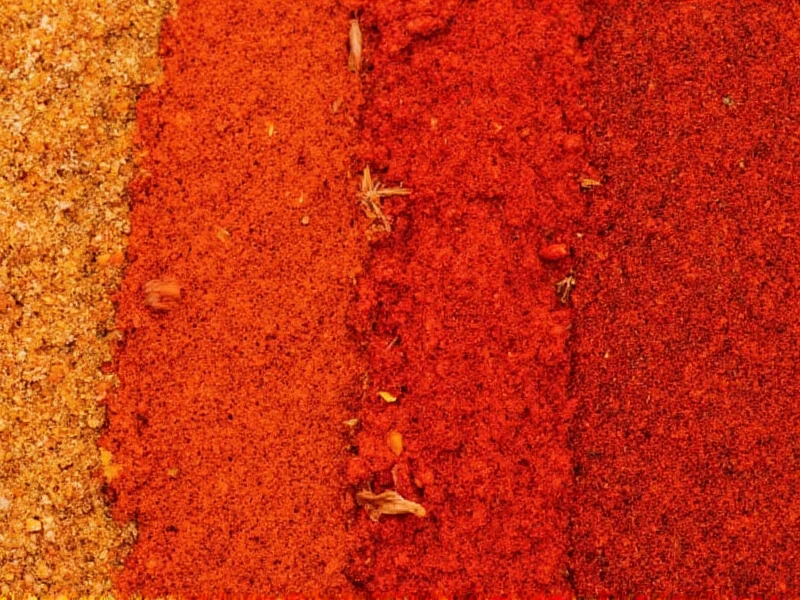When your recipe calls for paprika but your spice cabinet comes up empty, knowing effective paprika substitutes becomes essential for maintaining flavor integrity. Paprika, made from ground sweet or hot peppers, adds both color and distinctive flavor to dishes ranging from Hungarian goulash to Spanish chorizo. Understanding what can substitute paprika properly ensures your culinary creations don't suffer when this key ingredient is unavailable.
Understanding Paprika Varieties Before Substituting
Before exploring paprika alternatives, recognize that paprika comes in several varieties with distinct flavor profiles. Sweet paprika offers mild pepper flavor without heat, while smoked paprika (pimentón) provides that characteristic barbecue-like smokiness. Hot paprika delivers noticeable heat, and Hungarian paprika sits between sweet and hot with complex earthy notes. The right substitute depends heavily on which paprika variety your recipe requires.
Top Paprika Substitutes Ranked by Effectiveness
Chili Powder: Best All-Around Substitute
Chili powder makes an excellent paprika substitute in most savory applications, particularly for regular sweet paprika. While commercial chili powder blends often contain additional spices like cumin and garlic powder, it provides similar color and mild heat. When substituting chili powder for paprika, use a 1:1 ratio but recognize that the additional spices will subtly alter your dish's flavor profile. This works particularly well in chili recipes, taco seasoning, and tomato-based sauces where complementary spices enhance rather than detract from the intended flavor.
Smoked Salt: Ideal for Smoked Paprika Replacement
When your recipe specifically calls for smoked paprika, smoked salt becomes your most effective substitute. Use approximately 1/4 teaspoon of smoked salt for every 1 teaspoon of smoked paprika required. This alternative perfectly replicates the smoky dimension without adding unwanted heat. Smoked salt works exceptionally well in recipes like deviled eggs, barbecue rubs, and roasted vegetables where smoke flavor matters more than color. For dishes requiring both color and smoke, combine smoked salt with a small amount of tomato paste to achieve visual similarity.
Cayenne Pepper Blend: For Hot Paprika Replacement
To substitute hot paprika, combine 3 parts sweet paprika with 1 part cayenne pepper. Without sweet paprika available, create a makeshift blend using 1/4 teaspoon cayenne pepper mixed with 3/4 teaspoon sweet red pepper flakes (finely ground). This combination preserves both the color and heat level of authentic hot paprika. Exercise caution with measurements, as cayenne packs significantly more heat than even hot paprika. This substitute works best in hearty dishes like stews and meat rubs where intense heat can mellow during cooking.
Tomato Paste: Color Replacement Option
When paprika's primary role in your recipe is providing vibrant red color rather than distinct flavor, tomato paste serves as an effective visual substitute. Use 1 tablespoon of tomato paste diluted in 2 tablespoons of water or broth to replace 1 teaspoon of paprika. This works particularly well in dishes like paella or tomato-based sauces where the tomato flavor complements existing ingredients. While it won't replicate paprika's pepper flavor, it maintains the visual appeal that paprika provides to many traditional dishes.
| Substitute | Best For | Substitution Ratio | Flavor Notes |
|---|---|---|---|
| Chili Powder | Regular paprika in chili, stews, rubs | 1:1 | Slightly more complex with added spices |
| Smoked Salt | Smoked paprika applications | 1/4 tsp per 1 tsp paprika | Pure smoke without color |
| Cayenne + Sweet Paprika | Hot paprika replacement | 3:1 ratio | Adjust cayenne for heat control |
| Tomato Paste + Liquid | Color-focused recipes | 1 tbsp paste + 2 tbsp liquid per tsp | Adds tomato flavor |
| Chipotle Powder | Smoked paprika with heat | 1/2 tsp per 1 tsp paprika | Significantly hotter than smoked paprika |
Recipe-Specific Paprika Substitution Guide
Certain dishes require more thoughtful paprika substitution than others. For Hungarian goulash, where paprika defines the dish's character, combine sweet paprika substitute with a small amount of marjoram to capture the traditional flavor profile. When making Spanish chorizo or paella, smoked paprika's unique flavor proves challenging to replicate—consider using a combination of smoked salt and a touch of liquid smoke (just 1-2 drops) for authentic results.
In rubs for meats, particularly chicken and pork, chipotle powder makes an excellent smoked paprika substitute but requires careful measurement due to its intense heat. For deviled eggs or potato salad where paprika primarily provides color and mild flavor, tomato paste diluted in broth creates visually similar results without altering the dish's fundamental taste.
What Not to Use as Paprika Substitutes
Avoid using plain red food coloring as a paprika substitute—it provides color without any flavor dimension. Similarly, cayenne pepper alone makes a poor substitute for sweet paprika due to its intense heat. While some suggest using bell peppers, the water content and fresh flavor profile don't translate well to cooked dishes requiring paprika's concentrated flavor.
Storage Tips for Paprika and Alternatives
Maximize the shelf life of both paprika and its substitutes by storing them in airtight containers away from light and heat. Properly stored, paprika maintains peak flavor for 6-12 months, while chili powder lasts 6-8 months. Smoked salt remains stable indefinitely but should be kept dry. For best results when substituting, use fresh spices—stale alternatives won't provide the vibrant flavor your recipe deserves.











 浙公网安备
33010002000092号
浙公网安备
33010002000092号 浙B2-20120091-4
浙B2-20120091-4